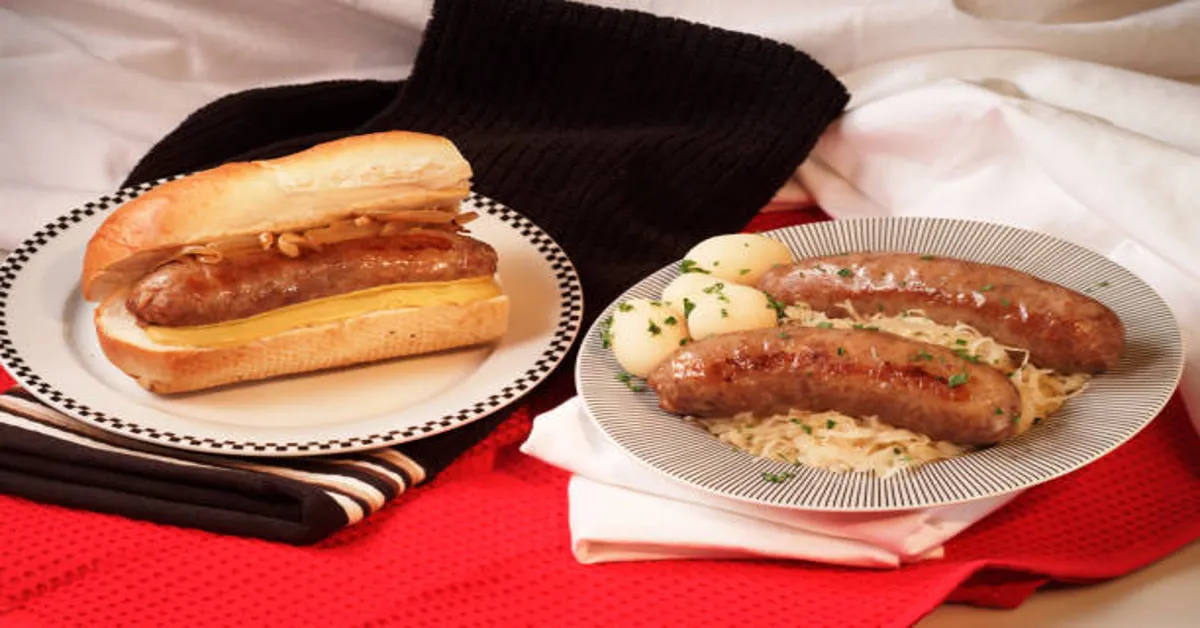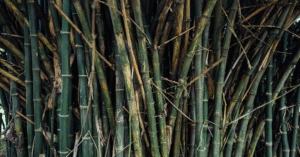When you think of Kobe beef, images of melt-in-your-mouth steaks, marbled texture, and luxury dining may come to mind. Kobe beef is widely regarded as one of the finest meats in the world, prized for its tenderness, flavor, and fatty richness. Now imagine combining this world-class meat with the hearty, comforting form of a traditional bratwurst. The result is Kobe bratwurst—a modern culinary creation that fuses the gourmet quality of Japanese Wagyu beef with the rustic satisfaction of German sausage-making tradition.
Kobe bratwurst may still be relatively unknown to the general public, but it is steadily gaining attention among food enthusiasts, gourmet chefs, and meat lovers who seek something extraordinary. This article takes an in-depth look at what Kobe bratwurst is, how it’s made, its origins, health aspects, cooking techniques, and why it stands out from ordinary sausages. Whether you’re a grilling enthusiast, a fan of fine meats, or simply curious about innovative food combinations, this comprehensive guide will provide everything you need to know.
What Is Kobe Bratwurst?
Kobe bratwurst is a type of sausage that incorporates Kobe-style Wagyu beef into its mixture, either alone or in combination with other meats such as pork or veal. Traditional bratwurst is a German sausage typically made from pork, veal, or a mix of meats and seasoned with spices like nutmeg, coriander, and white pepper. Kobe bratwurst takes this format and elevates it by using Wagyu beef, often raised according to Japanese Kobe-style methods, which emphasize marbling, tenderness, and fat quality.
It is important to understand that “Kobe” as a term is legally protected in Japan and refers specifically to meat from the Tajima strain of Japanese Black cattle, raised in the Hyogo Prefecture under strict regulations. Outside of Japan, however, “Kobe-style” or “American Kobe” beef is often used, which typically refers to Wagyu cattle breeds raised under similar standards in the United States, Australia, or other countries. These breeds offer comparable fat marbling and quality, making them ideal for use in high-end sausage like bratwurst.
The History Behind Kobe Bratwurst
The idea of blending Kobe beef with bratwurst is relatively new and born from a growing global interest in gourmet food fusion. While German bratwurst has centuries of tradition rooted in European culinary history, Kobe beef has only become widely recognized outside Japan in the last few decades. Chefs and artisanal sausage makers began experimenting with combining the two as a way to create a premium product that blends old-world techniques with new-world luxury.
Kobe bratwurst may not have an extensive historical timeline like traditional bratwurst, but it represents an evolution in modern gastronomy. By incorporating one of the most luxurious meats in the world into a common comfort food, Kobe bratwurst bridges the gap between gourmet dining and everyday meals. This hybrid reflects the increasing demand for high-quality ingredients, unique flavor profiles, and chef-driven creativity in home cooking and fine dining alike.
Why Use Kobe Beef in a Bratwurst?
One might ask: why use such an expensive and delicate meat like Kobe beef in a sausage, which is traditionally considered a humble, even rustic, food? The answer lies in the taste experience. Kobe beef is known for its intense marbling, which translates into a buttery, rich flavor and ultra-tender texture. When used in bratwurst, this marbling doesn’t just disappear; it becomes the heart of the sausage, melting into the ground meat and adding a level of richness and juiciness that traditional pork or veal bratwursts cannot offer.
Kobe bratwurst is often leaner than pork bratwurst in structure but paradoxically richer in mouthfeel, due to the unique fat distribution. This makes it both a healthier alternative (in terms of lean protein) and a more decadent option due to its flavor. The balance of savory seasoning, firm casing, and juicy meat gives Kobe bratwurst a distinctive character that sets it apart from all other sausages.
Ingredients and Seasonings
While ingredients can vary by producer, most Kobe bratwursts contain a few core components:
- Kobe or Kobe-style Wagyu beef: The primary meat component. Some variations blend it with a small percentage of pork or veal for texture.
- Natural sausage casing: Usually made from cleaned animal intestines for an authentic snap and mouthfeel.
- Spices: Traditionally includes white pepper, nutmeg, mace, marjoram, and garlic. Some gourmet versions include truffle oil, smoked salt, or herbs like rosemary.
- Binder/filler: Usually crushed ice, milk powder, or breadcrumbs to stabilize the texture without overpowering the flavor of the beef.
- Salt and curing agents: Essential for preservation and taste.
The key to Kobe bratwurst is restraint in seasoning—the goal is to highlight the natural flavors of the beef rather than mask them with strong spices.
How Kobe Bratwurst Is Made
The process of making Kobe bratwurst is similar to that of traditional sausage but with special care taken to preserve the delicate fat and flavor of the Wagyu beef. Here’s a simplified breakdown of the process:
- Meat Selection: High-grade Kobe or Wagyu beef is selected, ensuring balanced marbling and freshness.
- Grinding: The meat is coarsely ground to maintain texture but fine enough for uniform mixing.
- Blending: Spices, salt, and any binders are mixed in carefully. This step must be done cold to prevent the fat from melting prematurely.
- Stuffing: The seasoned meat is packed into natural or collagen casings using specialized equipment.
- Resting/Curing: The sausages are allowed to rest for several hours or overnight to allow flavors to meld.
- Cooking (Optional): Some producers sell fresh bratwurst, while others offer pre-cooked or smoked versions.
The final product is a sausage that retains the essential qualities of Kobe beef while offering the convenience and versatility of bratwurst.
Cooking Kobe Bratwurst: Best Practices
Cooking Kobe bratwurst requires a slightly different approach than standard sausages because of its higher fat content and delicate texture. Here are the best methods to cook Kobe bratwurst without compromising its quality:
1. Grilling
Grilling is a classic method for bratwurst but must be done gently for Kobe bratwurst. Use medium heat and avoid flare-ups that can char the delicate beef. Cook slowly, turning occasionally until the internal temperature reaches about 160°F (71°C).
2. Poaching and Browning
A preferred method among chefs is to first poach the bratwurst in a low simmering liquid—such as beer, broth, or water—for about 10–15 minutes. This ensures even internal cooking. Then, finish it off with a quick sear in a hot pan or grill for a golden-brown crust.
3. Pan-Frying
Pan-frying allows for controlled heat. Use a cast iron skillet with a bit of neutral oil. Cook on medium-low to preserve the fat and avoid overcooking the outer casing.
Avoid boiling the bratwurst directly or cooking it over high flames, as this can burst the casing and cause the fat to leak out, leading to dryness and a loss of flavor.
Health Considerations: Is Kobe Bratwurst Healthy?
While sausage is generally seen as indulgent food, Kobe bratwurst has some advantages when compared to traditional pork sausages:
- High in Protein: Wagyu beef is a great source of high-quality protein.
- Rich in Healthy Fats: The monounsaturated fats in Kobe-style beef are more heart-friendly than the saturated fats found in other meats.
- Fewer Additives: Many artisanal Kobe bratwursts avoid artificial preservatives and flavorings.
- Lower Sodium (in some varieties): Especially if minimally processed.
That said, Kobe bratwurst is still a rich, calorie-dense food and should be enjoyed in moderation as part of a balanced diet. If health is a concern, seek out low-sodium versions or sausages blended with leaner cuts of Wagyu.
Serving Ideas and Pairings
Kobe bratwurst is versatile and can be enjoyed in a variety of dishes. Here are some delicious and upscale ways to serve it:
- Classic with a Twist: Serve in a brioche bun with gourmet mustard, caramelized onions, and arugula.
- German-Inspired Platter: Accompany with sauerkraut, warm potato salad, and pickles.
- Asian Fusion: Slice and add to ramen or rice bowls for a Wagyu upgrade.
- Tapas Style: Cut into bite-sized pieces and serve with toothpicks, dipping sauces, and roasted vegetables.
- Breakfast Upgrade: Use instead of regular sausage in a breakfast sandwich or scramble.
Drink pairings can range from German-style lagers, Japanese sake, or red wines like Pinot Noir that balance richness with acidity.
Buying and Storing Kobe Bratwurst
Kobe bratwurst is available at select gourmet butcher shops, online specialty food retailers, and high-end grocery stores. Because of the premium meat content, it is usually more expensive than regular sausage, often sold in packs of four or six.
When purchasing:
- Check labels for authenticity. Look for “Wagyu,” “Kobe-style,” or “100% Wagyu beef.”
- Inspect packaging for freshness indicators, expiration date, and storage instructions.
- Choose vacuum-sealed options if buying online to preserve freshness.
Store in the refrigerator and consume within a few days after opening, or freeze for up to 3 months for longer shelf life.
Conclusion: Is Kobe Bratwurst Worth Trying?
If you are someone who appreciates culinary innovation, quality ingredients, and unique food experiences, then Kobe bratwurst is absolutely worth exploring. It combines the best of both worlds—the indulgent, buttery richness of Kobe beef and the rustic, satisfying form of traditional bratwurst. Whether grilled at a summer cookout or plated at a gourmet dinner, Kobe bratwurst delivers on flavor, texture, and originality.
Its price point may be higher, but the taste and experience more than justify the cost for special occasions or gourmet treats. As food culture continues to evolve, products like Kobe bratwurst exmplify how tradition and innovation can come together to delight the modern palate.
ALSO READ: Freely Agency: A Complete Guide to Its Vision, Services, and Digital Impact
FAQs About Kobe Bratwurst
1. Is Kobe bratwurst made with real Kobe beef from Japan?
In most cases, Kobe bratwurst uses Wagyu beef raised outside Japan, such as in the U.S. or Australia. It may be labeled as “Kobe-style” or “American Kobe.” Authentic Japanese Kobe beef is extremely rare and expensive for use in sausages.
2. How is Kobe bratwurst different from regular bratwurst?
Kobe bratwurst uses Wagyu beef, which is richer in marbling and flavor. It offers a more luxurious, tender, and buttery texture than traditional pork or veal bratwurst.
3. Can I grill Kobe bratwurst like regular sausage?
Yes, but it’s best to cook over medium heat and avoid flare-ups. You can also poach before grilling to maintain moisture and prevent casing rupture.
4. Is Kobe bratwurst healthy?
While rich, Kobe bratwurst contains healthy fats and high-quality protein. It is less processed than many commercial sausages but should still be eaten in moderation due to its fat and calorie content.
5. Where can I buy Kobe bratwurst?
Kobe bratwurst is available at gourmet butcher shops, online specialty food retailers, and high-end grocery stores. Look for reputable brands offering Wagyu or Kobe-style sausage.









